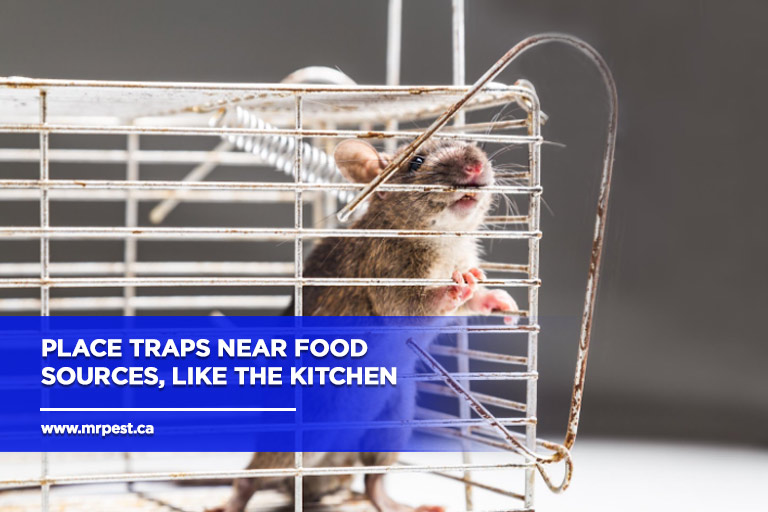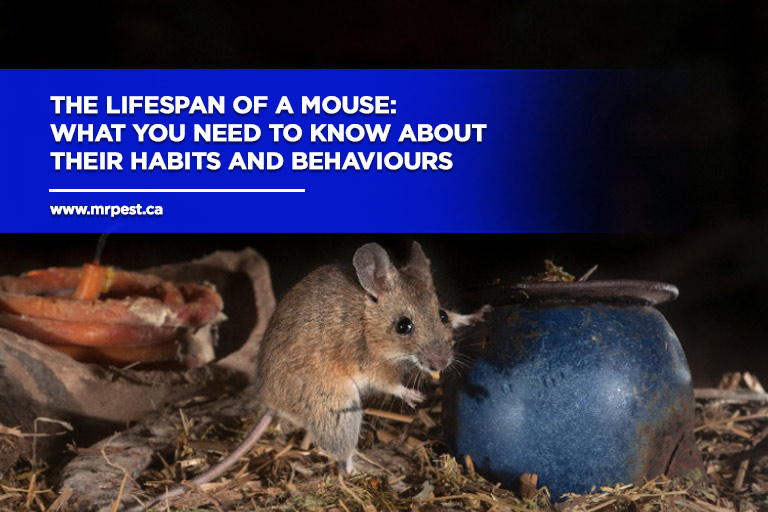Understanding the habits and behaviours of mice is crucial when it comes to effective pest control.
These small rodents may seem harmless, but their presence can lead to significant problems in homes and businesses. Mice are not only prolific breeders, but they also have a knack for sneaking into the smallest of spaces, making them challenging to control once they infest a property.
Lifespan and Reproductive Rate of Mice
Mice are known for their short lifespans, typically living only 1 to 2 years in the wild. However, what they lack in longevity, they make up for in reproductive capability.
According to a post on Animal Diversity Web, female mice can become pregnant every 4 to 5 days. This astonishing reproductive rate enables them to produce 5 to 10 litters per year, with each litter containing approximately 5 to 12 pups.
This rapid breeding cycle contributes significantly to the challenges of controlling mouse populations. A single pair of mice can lead to hundreds of offspring in just a few months, making it crucial to address infestations promptly.
The ability of mice to reproduce at such a high rate means that even a small infestation can quickly escalate into a larger problem if not managed effectively. Understanding the reproductive behaviour of mice is key to developing strategies for long-term pest control and prevention.
Common Habits and Indicators of Infestation
Understanding the common habits of mice can help you identify an infestation early, preventing potential damage and health risks. Here are the key behaviours and signs to look out for when assessing the presence of these pests.
- Nocturnal Activity and Signs of Presence
Mice are nocturnal creatures, most active during the night. This behaviour often conceals an infestation until it becomes more severe. Key indicators include droppings, which are small, dark, and pellet-shaped; often found near food sources, along walls, or in hidden areas.
- Gnaw Marks and Property Damage

Another clear sign of an infestation is gnaw marks. Mice constantly chew on materials to prevent their teeth from overgrowing. These marks can be found on food packaging, wires, furniture, and other household items, potentially causing significant damage.
- Nesting and Material Accumulation
Mice build nests using a variety of materials such as shredded paper, fabric, and insulation. These nests are typically hidden in secluded areas like wall voids, attics, or under appliances. Discovering nesting materials can be a strong indicator of an infestation.
- Odour and Subtle Evidence
A musky odour is another sign of a mouse presence. Additionally, mice often leave behind tracks and smudge marks. They travel along the same paths, leaving oily smudges from their fur and footprints in dusty areas. To detect these tracks, you can sprinkle a light layer of flour or talcum powder.
- Auditory Clues: Scratching and Scurrying
Hearing scratching or scurrying noises, especially at night, is a strong indication of mouse activity. These sounds usually come from walls, ceilings, or floors where mice are moving around.
Mouse Behavior and Entry Points
Mice are exceptionally skilled at finding ways into homes and buildings, exploiting even the smallest openings to gain access. Understanding their behaviour in seeking entry points is critical for effective pest control and prevention.
- Preferred Entry Points
Mice can squeeze through gaps as small as a quarter-inch, making it easy for them to enter through cracks, holes, and gaps around doors and windows. They often target areas where utility lines enter the building, such as plumbing, electrical, and gas lines. Foundation cracks, poorly sealed doors, and vents are also common entry points.
- Structural Vulnerabilities
Buildings with damaged or missing weatherstripping, worn-out door sweeps, or unsealed garage doors are particularly vulnerable. Mice can also climb rough surfaces and jump up to a foot in height, allowing them to access higher openings, including roof vents and chimney openings.
- Use of Scent Trails
Once inside, mice rely on scent trails to navigate and locate food and nesting sites. These trails, marked by their urine and scent glands, help them return to favourable locations and communicate with other mice.
This behaviour makes it challenging to eliminate infestations, as even after removing food sources, mice can follow these trails back to previously occupied areas.
- Seasonal and Environmental Factors
Mice are more likely to seek entry into buildings during colder months as they search for warmth and shelter. Changes in the environment, such as construction or natural habitat disturbances, can also drive mice indoors in search of new nesting sites.
Effective Pest Control Strategies
Dealing with a mouse infestation requires a proactive and comprehensive approach. Here’s how to tackle the problem effectively.
- Seal and Secure Entry Points
Seal all potential entry points by repairing cracks in foundations, closing gaps around doors and windows, and plugging holes around utility lines. Secure food storage areas using airtight containers and eliminate clutter to reduce nesting sites.
- Deploy and Monitor Traps

Deploy traps strategically along walls, in dark corners, and near signs of activity. Choose from various types of traps such as snap, live, or electronic traps. Place baits that attract mice, such as peanut butter or chocolate, and monitor and reset traps regularly to ensure their effectiveness.
- Apply and Use Rodenticides
Apply rodenticides carefully according to label instructions and safety guidelines. Use these chemical agents in targeted locations to minimize risks to pets, children, and non-target animals. Consider engaging professional pest control services for safe and effective application, especially in sensitive areas.
- Engage Local Pest Control Experts
Engage professional services on pest control in Orillia, or those near your location, who understand the specific challenges of the local environment. Schedule comprehensive inspections and request customized treatment plans. Implement their recommendations for ongoing monitoring and adjustments to achieve long-term success.
- Adopt Integrated Pest Management (IPM)
Adopt Integrated Pest Management (IPM) practices by combining preventive measures, mechanical controls (like traps), and, if necessary, chemical treatments. Monitor and document pest activity to assess and adjust your strategies for optimal results.
Take Action Now for a Mouse-Free Space!
Understanding mouse behaviour and implementing effective control strategies is key to maintaining a pest-free environment. If you’re dealing with a mouse infestation or need assistance with mice & rat control in Orillia, contact Mr Pest Control at (705) 326-3377. Act now to safeguard your home and enjoy peace of mind!



